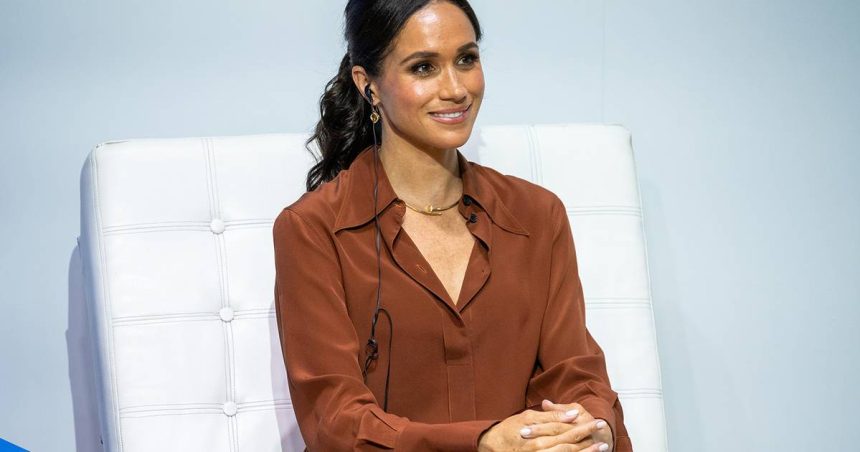Even the Duchess of Sussex isn’t above a link in bio.
Earlier this month, Meghan Markle joined affiliate marketing platform ShopMy and shared commissionable links for everything ranging from a Reformation button-down to a Uniqlo trench coat.
Meghan is certainly not the first public figure looking to make a buck off a product recommendation, and this isn’t her first rodeo, having used affiliate platform LTK prior to becoming a royal. But her decision to join ShopMy as one of the world’s most influential and recognizable people marked a high-profile moment for affiliate marketing and led some online to wonder whether everyone will soon have a monetizable lookbook as part of their online presence.
Based on the booming business of affiliate marketing, it doesn’t feel entirely far-fetched. LTK, which was founded in 2011, was valued at $2 billion in 2021 and says it now drives $5 billion in annual sales. Earlier this year, ShopMy, which was founded in 2020, was valued by investors at $410 million, a fivefold increase from the year prior. Each month, more than $50 million worth of products are sold through creators’ ShopMy links, Tiffany Lopinsky, ShopMy co-founder and president, told Marketing Brew.
Lopinsky said the affiliate marketing space is seeing growth as creators and celebrities look for additional ways to generate revenue and brands seek organic-seeming ways to connect with consumers. As of January, more than 550 brands had ShopMy subscriptions, and a majority of them don’t create more traditional sponsored content with influencers, she said.
“People are starting to see affiliate as [almost an] alternative to sponsored posts,” Lopinsky told us.
We spoke with Lopinsky about the changing nature of affiliate marketing and where ShopMy goes from here.
Moving down the funnel
While influencer marketing has traditionally been a top-of-funnel marketing tactic, Lopinsky said that as budgets tighten and marketers prefer to show tangible sales results, some brands have begun approaching it as a performance channel. Influencer agents and managers, who previously may have sought out bigger deals, seem to be warming up to affiliate marketing since it can provide concrete sales data that can be used when negotiating brand deals, she said.
“It’s the new way to work with creators,” she said. “We previously only had one way, which was just a sponsored post, kind of flying blind, and asking [creators] to send you a screenshot of their own analytics on a platform.”
Lopinsky doesn’t expect traditional influencer partnerships to go away entirely; influencers with many followers are likely to continue to ink deals for their name, image, and likeness and remain reliable resources for media value and impressions. But she’s bullish that marketers viewing influencer affiliate marketing as a performance channel can benefit both brands and creators.
“Creators are going to benefit immensely from it because brands are going to invest way more money in it,” she said. “They’re not going to see it as just an experiment anymore, which, honestly, I think it’s still viewed that way by so many.”
Link in bio
On social, it’s commonplace to see creators’ comment sections flooded with questions about what they’re wearing, regardless of the topic of the post. Lopinsky said leaning into viewers’ curiosity could benefit creators—and the brands they mention—by coming across as “a lot more natural” than a scripted brand post.
Get marketing news you’ll actually want to read
Marketing Brew informs marketing pros of the latest on brand strategy, social media, and ad tech via our weekday newsletter, virtual events, marketing conferences, and digital guides.
“I think the audience would rather [hear creators]…talking about their day and then say, ‘And by the way, here’s the sweater I’m wearing and here’s my necklace,’ as opposed to, ‘I’m interrupting my normal content to present you with this ad,’” she said.
When brands see certain influencers driving sales, Lopinsky said, some respond by gifting additional items to encourage additional posting. Brands can also reward creators by increasing their commission rates or giving them bonuses on items they have shared in an effort to make the content cadence and potential sales results “more consistent and more predictable” month over month. Based on her observations, Lopinsky said it’s becoming increasingly common for creators to work with brands on a “guaranteed-linking basis.”
One of the potential benefits of affiliate partnerships is the ease of customers buying a product straight from a click. Right now, Lopinsky said most sales come from direct URLs rather than the ShopMy shops linked in creators’ Instagram or TikTok bios. Commissionable links in Instagram Stories currently drive the greatest volume of sales, followed by those on Substack, she said; other newsletter platforms, like Beehiiv, have yet to deliver the same level of success.
Some influencers and celebrities (including, perhaps unsurprisingly, the Duchess of Sussex) may receive pushback when sharing commissionable links, but Lopinsky said audiences generally understand that affiliate revenue allows creators to keep creating and they can be more accepting when an endorsement seems authentic.
“People can tell in the context you give if it’s genuine or not,” she said. “If it’s not, you don’t move a lot of products.”
Cut the fat?
Affiliate platforms like ShopMy and LTK don’t only compete with each other—more recently, they’ve been going up against the social platforms they rely on. Last summer, YouTube unveiled its own YouTube Shopping affiliate program, which allows creators to tag products directly in their content, removing the added step of going to a third-party website. TikTok Shop also lets customers buy tagged products without leaving the app.
Lopinsky isn’t concerned about social media platforms embracing the affiliate space. She views their affiliate options as something like a gateway for creators and brands to platforms like ShopMy, which can support more complex affiliate campaigns with tools like audience targeting and influencer gifting.
Even if social platforms might one day replicate those features, it seems to Lopinsky that the more big players there are in the space, the merrier.
Ultimately, she said, “it’s evangelizing the concept of affiliates.”
Read the full article here









